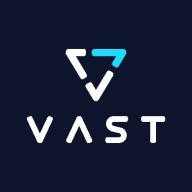


Hitachi Virtual Storage Platform and VAST Data compete in robust storage solutions. Hitachi has the upper hand in deployment and support, while VAST Data shines with its innovative features.
Features:Hitachi Virtual Storage Platform is valued for its reliability, scalability, and integration capabilities, making it suitable for diverse IT environments. VAST Data impresses users with its performance, scalability, and simplicity, particularly in handling large-scale unstructured data. VAST Data's unique architecture and speed give it an edge in feature evaluation.
Room for Improvement:Users suggest Hitachi Virtual Storage Platform could improve its cloud integration and automation capabilities. VAST Data users seek enhancements in multi-tenancy and additional backup options. Hitachi may need to focus on modernizing its cloud functions, while VAST Data should aim to refine its administrative controls.
Ease of Deployment and Customer Service:Hitachi Virtual Storage Platform is reported to have a user-friendly deployment model and responsive customer service, making it accessible for organizations of various sizes. VAST Data, while highly performant post-deployment, has a slightly steeper learning curve and could improve its customer support responsiveness. Hitachi’s smoother deployment gives it an advantage here.
Pricing and ROI:Hitachi Virtual Storage Platform users find the setup cost reasonable, with a strong return on investment due to its durability and service quality. VAST Data, though perceived as more expensive upfront, is justified by users for its advanced capabilities and long-term cost efficiency. VAST Data's higher initial costs are offset by its superior data handling and performance.
| Product | Market Share (%) |
|---|---|
| Hitachi Virtual Storage Platform | 7.9% |
| Pure FlashArray X NVMe | 3.2% |
| VAST Data | 5.9% |
| Other | 83.0% |



| Company Size | Count |
|---|---|
| Small Business | 15 |
| Midsize Enterprise | 11 |
| Large Enterprise | 12 |
| Company Size | Count |
|---|---|
| Small Business | 19 |
| Midsize Enterprise | 14 |
| Large Enterprise | 28 |
Pure Storage FlashArray//X is the world’s first enterprise-class, all-NVMe flash storage array. It represents a new class of storage – shared accelerated storage, which is a term coined by Gartner – that delivers major breakthroughs in performance, simplicity, and consolidation.
RETHINK YOUR DEFINITION OF SPEED AND PERFORMANCE
With adaptive, guaranteed data reduction and a 100% data-availability guarantee, Hitachi Virtual Storage Platform F series helps you tackle complicated business challenges. Hitachi Data Systems (HDS) VSP F series delivers up to 4.8M IOPS with sub-millisecond response times.
Featuring legendary Hitachi reliability, VSP F series arrays are backed by the industries only 100% availability guarantee. For these reasons, 80% of the Fortune 500 choose Hitachi all-flash arrays to accelerate the performance of mission-critical applications like Oracle, SAP, Virtualization, Microsoft apps etc. With over 350 patents in flash technology, Hitachi’s innovative mix of flash hardware and software accelerates ROI with enterprise-class reliability and performance.
Innovation to break decades of data storage trade-offs.
We monitor all NVMe All-Flash Storage Arrays reviews to prevent fraudulent reviews and keep review quality high. We do not post reviews by company employees or direct competitors. We validate each review for authenticity via cross-reference with LinkedIn, and personal follow-up with the reviewer when necessary.